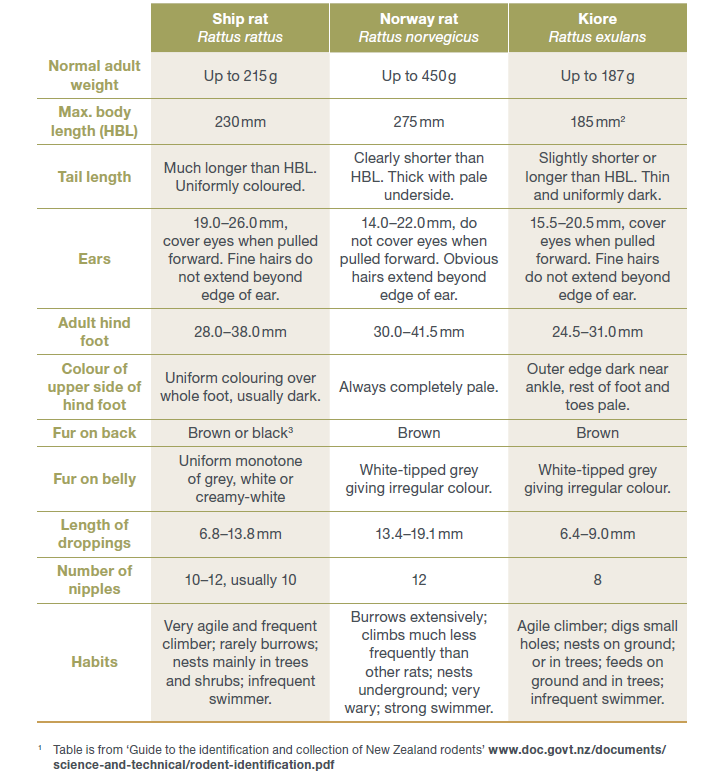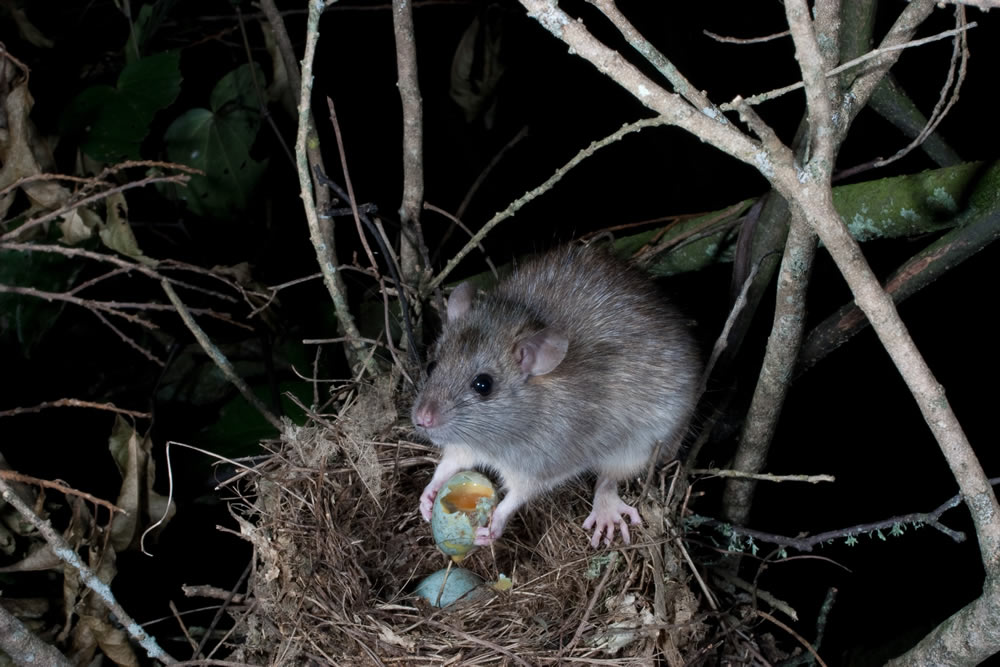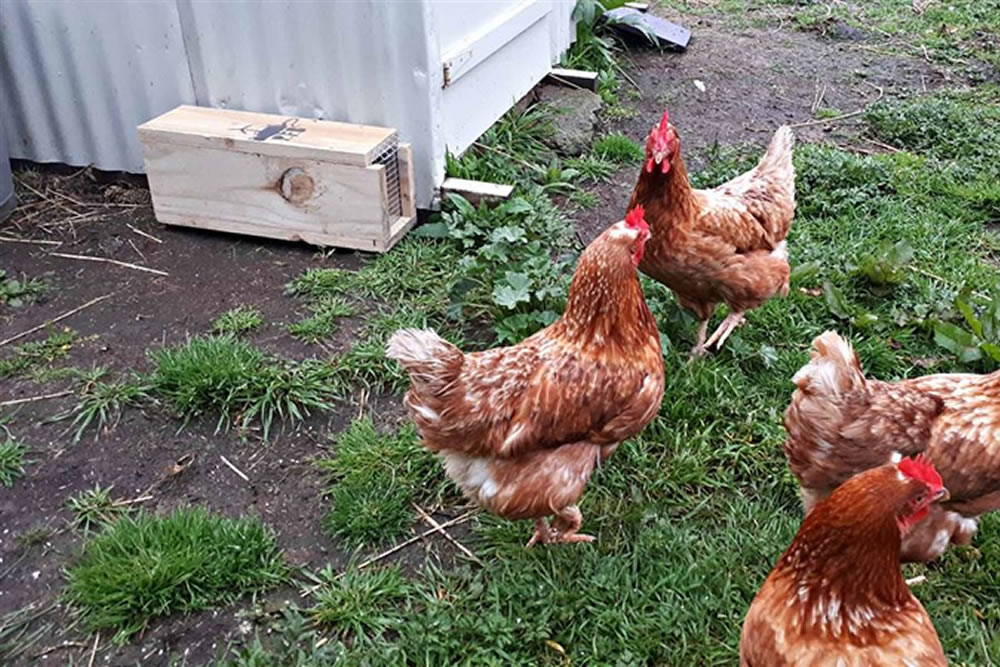The first thing to know is that three species of rats have been introduced to New Zealand: the ship rat (sometimes referred
to as black rat or roof rat), Norway rat (often called brown rat, water rat or sewer rat) and kiore (also referred to as Pacific rat, Māori rat or native rat, even though they are not native to New Zealand). Our focus is on Ship and Norway rats.

What’s the Problem?
Rats have a major impact in New Zealand because they are omnivores – eating birds, seeds, snails, lizards, fruit, insects, eggs, chicks, larvae and flowers. The varied diet of rats also makes them competitors with native wildlife for food sources.
Ship rats are widespread in lowland podocarp-broadleaf forests. Because they are good climbers, they can access bird nests high in trees.
Habitat
- Ship rats are found in most habitats and are now the most abundant and widespread rats on mainland New Zealand. They are good climbers and are therefore the rats most commonly found in forests. In our environment we’ll mostly see ship rats, which impacts our trapping strategies.
- Norway rats are more typically associated with human activity and are usually found in urban areas, wet habitats and on some offshore islands.
Behaviour
- Rats have a built-in defence mechanism which makes them wary of new things in their environment (neophobic). Therefore, new traps, bait stations or tracking tunnels need to be installed a few days before you use them.
- Rats have a high rate of population increase. Annually they can have several litters and produce 11–16 pups.
- This means control projects must either control continuously or time their efforts carefully to provide protection to native species at vulnerable times (eg for birds during their breeding season).
- Rat food preferences are often passed on socially. This means rats ‘teach’ others about food sources and this can include their preferences towards poison and baits.
Identification

Rat Facts

Rats are a common pest, in our houses and in the bush. We have two main types so it’s important to understand the type of rat your trying to catch to improve your chances.
Rat Traps

There are many different types of rat traps available, here’s our take which traps are likely to be most effective for you.
Rat Trapping Tips

While rats are numerous, the are wily creatures and can present a challenge to catch. Here’s the what, where and how of trapping rats!
Let’s work together to help reWild Wainui!
Join our community initiative to reduce Weeds, remove Pests and replant Natives.